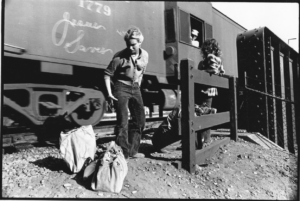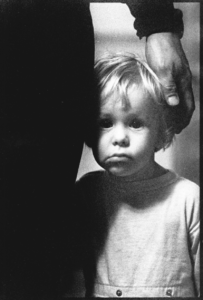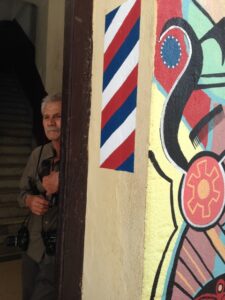Cartier-Bresson said that what he likes most about a photograph is what is not visible.
The great photographer Robert Frank said that we must be detectives. Snooping and probing, always looking for insight into the process of making meaningful photographs.
Reading through my notes from about two years ago, I came across the phrase “to photograph what is below the threshold of visual perception” scribbled in my moronic squiggle, which I felt would have enormous significance for millions of photographers who, like me, are searching for a bigger awareness of what can make a photograph that has the power to move the viewer emotionally. Here it was for all my fellow photographers who are searching for strength in their photographs.
Here is another quote that I think really pertains to what we are trying to understand, that is, how to portray what is invisible.
“And now here is my secret, a very simple secret: It is only with the heart that one can see rightly; what is essential is invisible to the eye.” ― Antoine de Saint-Exupéry, The Little Prince
We struggle in our climb up the ladder towards personal excellence in photography. Sometimes a year or two of study and practice will allow us to advance one more rung of the ladder. Sometimes we will achieve much useful knowledge from unusual places. This time its in the form of a group of well chosen words that make up a phrase that when read and reread, and then read again and again, until gradually the brain accepts this new information. The brain must be helped along, because it has had little training for this kind of mental reaction and function as it pertains to our photography.
To photograph what is below the threshold of visual perception. These fifty-three letters arranged into ten words can lift us all upwards on that steep ladder, a new plateau of awareness of what can be achieved in the photographic medium. The one dimensional photograph can be made to affect the viewer on an emotional level. Something implied and not visible in the photograph, but felt emotionally, can make the photograph a treat for the heart as well as the eyes. Write it down; carry it with you, read it often. Take this new dimension of knowledge into your photographs and remember the day you found this new area of expression.
My technique for achieving this invisible factor in a photograph is to supply the viewer with only the bare essentials as they apply to visual information in the photograph. It is important to attempt to narrow down the view to only the important facts and their relationship to each other and to the center of interest, or main subject. I always try to include at least three things in my photographs.
I use a 55mm lens which allows me to eliminate any distractions, narrow down to the essentials and portray relationships that have been established through effective framing, focusing and timing, and imply some form of connection with each other. Magnetic waves, or some type of an invisible aura to tie the facts together, and in doing so, imply something which is not visible in the print. My goal is to affect the viewer’s emotions and to connect and the brain and its reaction to what the eyes see and to what the heart feels.
Here are two examples of this concept.
The time was late afternoon in Dublin. My reaction to this scene was based on all that my eyes had seen and my heart felt in a lifetime of 29 years. Tired of riding the bike alone, the child runs ahead with the other children, but what about the bike? Dad will bring it along for you. Dad is always there to bring the bike along for you. I was aware of this when I made the image and I knew that I must give the viewer of my photograph enough visual information for an understanding to be felt. To provide the correct or effective type of information and relationships between elements and factors in the scene must be established. These relationships, if effective, will lead to an emotional reaction by the viewer. The relationships in this photograph speak for themselves, but dad is there and the bike is with him as the kids run ahead into the cathedral rays of light that seem to bless the scene with Irish softness and a love for their children at the end of their playing.
Many years ago in Venice Beach California this woman was reading a letter and I happened to be passing by. My interest halted me there as I tried to make something of the scene. I established in my mind, the relationship of the old woman, the shopping cart which gave more information and the plastic gloves that indicated mental illness. Still, there was not enough there for me to make a photo yet. I needed more. My eyes went to the letter and I saw the “Dear Mom” and it melted my heart and I made the image and moved on. Later, after I made the first print, I was able to read parts of the letter and my heart was melted again. The “Dear Mom,” the gloves, the clothes, the shopping cart and the letter, which had been folded and unfolded for seven years by the time the image was made. With a magnifying glass, I could make out the date of the letter. Seven years of reading a heartbreaking letter to herself. All alone with only the letter to hold and wonder at with that fading mind and heart.




